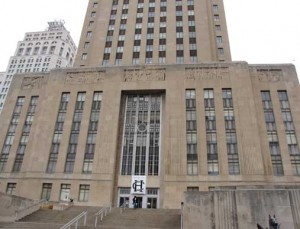The long-raging controversy over the size of the new crime lab ended Thursday with a compromise.
The city council unanimously passed an ordinance that allows for a lab smaller than what was promised voters but larger than the city’s scaled back alternative.
Police and city officials worked for days on the deal that involves the sale of $78 million in bonds for that and several other projects.
Jan Marcason, chair of the city council finance committee, said “I think we have come up with a state of the art facility, a fabulous economic development project for the third district, and it’s something we can afford.”
Voters approved the quarter-cent public safety sales tax in 2010 to fund many police projects before it expires in 2026.
The crime lab was to be 71,400 square feet, part of a complex expected to fuel development on the east side.
It is to go in by the new east patrol station in a four-block area at 27 Street and Prospect Avenue, but cost overruns in acquiring property there forced a cutback.
The city then proposed a lab of 54,000 square feet, saying it could not afford debt service on about $7 million more in bonds for the full size building.
Sometimes you have to drive a Ford instead of a Mercedes, Mayor Sly James said.
Councilman John Sharp and the board of police commissioners pushed for the full-size lab, but found no way to fund it without severe police cuts elsewhere.
The compromise involves shifting design of things on the crime lab campus to gain from about 4,000 to 6,000 square feet, making a lab of about 60,000 square feet at no more cost.
On Thursday, Sharp still argued against the smaller lab and was the only vote against an amendment that lowered the bond amount to accommodate the smaller lab. Bonds were issued previously for $60 million to cover the east patrol complex and $14 million of the new $78 million will cover the severe cost overruns.
The current lab of about 31,000 square feet has a backlog of a year for DNA tests, 16 months for fingerprints and four months for firearms work, Sharp said. “I don’t want to be in a situation where just a few year down the road we’re cramped again,” he said.
Faster lab work could eventually lead to less crime because more of the few people who commit crimes would be locked away, Sharp said.
He and Councilman Jim Glover suggested police and the city consider working with other area crime labs to try to reduce the backup of cases.
Police and city officials said they are looking into that.
Police Commissioner Lisa Pelofsky, who until recently was president of the board of police commissioners, said the compromise was a fair one.
Councilman Jermaine Reed said the bottom line is massive development going to the inner city, “dollars that are going to transform a community that deserves to be transformed.”
James said the lab works with development on Troost Avenue to attract yet more development.
“This is exactly what we have to do,” he said. “It has been a strategic investment.”




Who’s talking